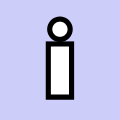Marty Hayes, owner of the Firearms Academy of Seattle, is fond of telling new students the one and only real secret of accurate marksmanship. Are you ready? Here it is, the secret of accurate shooting:
 ~ THE Secret of Accurate Shooting ~
“Your sights must aligned with the target
|
That’s it. That’s the entire secret of accurate shooting. Everything else — grip, stance, smooth trigger press, follow-through — all of those are just detailed ways to help ensure that your sights are in the right place when the shot fires. If your sights are lined up with the target when the shot goes off, you will hit the target. If they aren’t, you won’t. It’s that simple.
So how can a shooter be certain that the sights will be lined up on target when the hammer falls?

The relationship between the shooter’s eye, the sights, and the target is critical when shooting for accuracy. |
 |
|||
 |
|||
 |
|||
 |
|||
 |
|||
 |
|||
 |
|||
Several common types of sights. |
|||
 |
|||
Target hold. |
|||
 |
|||
Combat hold. |
|||
|
 |
|
This shot will go to the left of the intended point of aim. |
|
 |
|
This shot will go to the right. |
|
 |
|
This shot will go high. |
|
 |
|
This shot will go low. |
|
 |
|
This shot will hit the intended point of aim. |
|
 |
|
Especially when using big dot sights, be careful not to bury the front sight. |
|
 |
|
Instead, keep the top edge of the front sight aligned with the top edge of the rear sight. |
|
|
Sights come in a variety of configurations. There are three-dot sights, bladed sights, U-shaped sights, V-shaped sights, dot-the-i sights, peep sights, and on and on in nearly infinite variety.
All of these different sighting mechanisms are designed to assure that the barrel of the gun is held in the correct orientation to the target on both the vertical and the horizontal axis. This ensures that the shot will land neither to the left or right, nor high or low, from the intended point of impact. When the entire length of the gun barrel (represented by the sights) is properly lined up with the center of the target at the moment the shot breaks, the bullet will hit the center of the target.
Understanding the relationship between front and rear sights
Since the purpose of the sights is to align the gun properly, it’s important to understand how the sights are designed to do that.
Looking at the front sight, it may be a blade or a dot. If it is a dot, it may be large or small. The rear sight may be a U shape, a V shape, two dots, a straight line, or a simple notch in the back edge of the slide.
No matter how the sights are configured, the front sight is designed to be placed on the same vertical axis as the rear sight. If the rear sight is a basic straight line, simply place the dot of the front sight right on top of that line, as if you were dotting an i.
Otherwise, place the front sight so that it is centered within the notch of the rear sight. There should be an equal amount of light on either side. This will keep your shots from going to the left or right of where you aim. In the pictures to the right of the screen, you can see how each front sight is neatly centered between (or upon) its corresponding rear sight.
Except in the case of “dot the i” sights, the top edges of the rear sight should be held exactly even with the top edge of the front sight. Holding the top edges of both front and rear sights on the same plane will prevent your shots from hitting high or low.
When the sights are held in the correct relationship to each other, the shot will go neither high nor low, neither left nor right. The gun will be aligned with your eye and with the target on both the horizontal and the vertical axis.
Some sight designs which have a large front sight in comparison to a relatively small rear sight will tempt you to “bury” the front sight while shooting. This will cause your shots to go a bit low. Pay special attention to the horizontal axis (keeping the top edge of the front sight in line with the top edge of the rear sight) until you have become very familiar with using these types of sights.
Where to put the front sight
Now that you have the front and rear sight in the correct relationship to each other, where do you place the front sight in relation to the target?
Most handguns will have their sights aligned on the horizontal axis to provide either a combat hold or a target hold. Those phrases are shooting jargon which answer the commonly-heard question, “Do I put my front sight in the middle of the bullseye, or at the bottom of the bullseye?” Guns which are sighted in for a combat hold require the shooter to place the front sight where it covers the exact center of the target, while guns sighted in for a target hold achieve greatest accuracy when the front sight is aligned at the center of the bottom of the bullseye.
Generally speaking, handguns which are appropriate for self-defense will use the quicker but less precise combat hold.
Remember Mel Gibson’s advice to his son in the movie The Patriot? “Aim small, miss small.” This is an excellent piece of shooting advice. When you are faced with a large target, pick a small area within that target upon which to center your shots. For instance, when looking at a cardboard IPSC target, rather than aiming for “somewhere in the center,” try to hit the triangle which makes up the top part of the capital A in the A-zone.
As discussed above, remember that the correct placement of the front sight on the target must happen at the same time as the front and rear sights are held in the correct relationship to each other.
Where to focus
No matter which sighting system is on your handgun, when you are using sighted fire, it is important that you learn to keep your eyes focused on the front sight the entire time you pull the trigger, and during follow-through after the shot breaks. Physiologically, it is simply not possible for the human eye to focus on a near object and a far object at the same time. This means that when your eye is focused upon the front sight, the target will be blurry. And when your eye is focused on the target, the front sight will be blurry. Some people (mostly young folks) can switch their focus back and forth rapidly enough to fool themselves into thinking that both are in focus at the same time, but it’s not true. One or the other is in focus at any given time.
What all this means is that you will need to decide which is more important to have in sharp focus: the large target, or the tiny front sight. If you want to shoot accurately, you absolutely need to really see that tiny front sight and what it is doing. And that is why shooting instructors always tell their students to look at the front sight.
Especially if you are prone to missing high, it is possible that you are shifting your focus from the front sight to the target at the last possible moment before the shot goes off. When you shift your sight to the target, it’s very common for the muzzle to rise slightly in response — just enough to cause the shot to land high rather than in the center of the bullseye.
What about that wobble?
It is normal for the sights to wobble a bit when you are holding your firearm on target. Accept that fact. The wobble is a normal event, and it happens to every shooter. Human beings are not machines! There is no human being on the planet who can hold a firearm with machine-like stillness and immobility. The wobble will always be there.
Sometimes the wobble will be worse than other times. As humans age, our hands naturally become a little more shaky. After a few swallows of tea, coffee, or caffeinated soda, most people experience slightly shaky hands (though most of us never notice this apart from the range). And when there is a lot of adrenalin in your system — for instance, when shooting in front of someone you want to impress, or for points in a match, or under the significant stress of a deadly force encounter — hands will always shake. It’s just a fact of life.
So what to do about it? First and foremost, you need to admit that you do shake. Don’t try to deny it or force yourself not to do it. You must accept the wobble and pull the trigger smoothly while the wobble is happening. If instead you fight it or try to snatch the trigger back during that brief, absolutely perfect moment as your front sight trembles across the center of the target, your shots will go low. Don’t say I didn’t warn you!
You must accept the wobble for what it is: a minor, natural event that cannot really keep you from hitting the target unless you overreact to it. Keep your sights aligned as evenly as you can, but do not try to snatch the trigger back at the magic moment when the sights are absolutely, totally, perfectly aligned. Instead, smoothly increase pressure upon the trigger while keeping the sights aligned on the target as steadily as you are able.
By steadily increasing the pressure on the trigger while keeping the sights lined up as steadily as you are able, you assure that your sights will be aligned with the target at the moment the hammer falls.
And what’s the entire secret of accurate shooting?
“Your sights must aligned with the target at the moment the hammer falls.”







